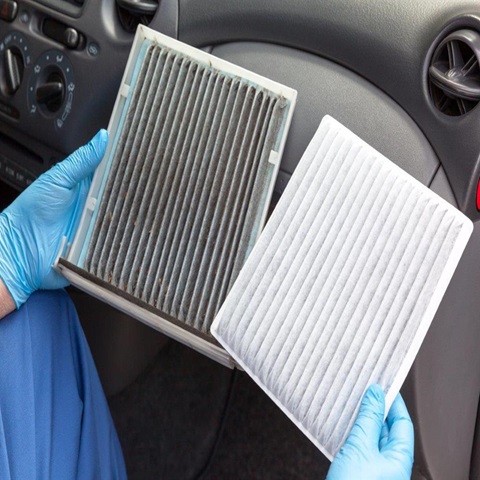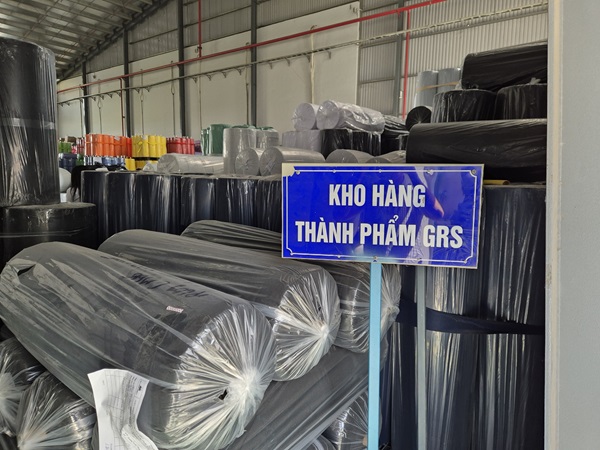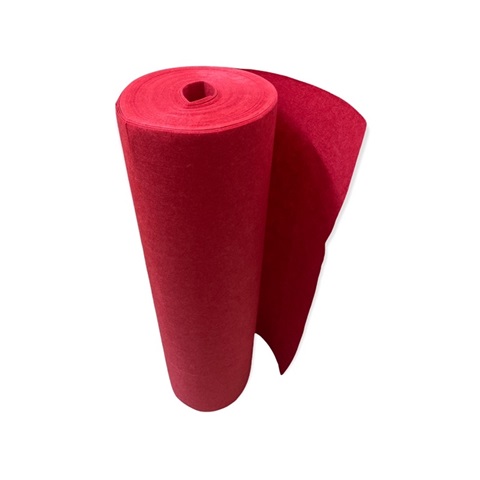Needle punched nonwoven fabric, also known as needle punched felt, is one of the remarkable new materials in the garment and daily life industry. Thanks to its outstanding properties and diverse applications, this type of fabric has quickly attracted the attention of many industries. In this article, we will learn in detail about needle punched nonwoven fabric, from its characteristics, production process to practical applications in life.
Needle punched nonwoven fabric: An emerging material solution in the garment industry
Needle punched nonwoven fabric, also known as needle punched felt, is one of the remarkable new materials in the garment and daily life industry. Thanks to its outstanding properties and diverse applications, this type of fabric has quickly attracted the attention of many industries. In this article, we will learn in detail about needle punched nonwoven fabric, from its characteristics, production process to practical applications in life.
1. What is needle punched nonwoven fabric?
Needle punched nonwoven fabric is a type of fabric created without going through the traditional weaving process. Instead, the fabric is created through the process of mixing, spreading and needle punching to connect short polyester or polypropylene fibers to form the nonwoven fabric that we see on the market. The production process not only helps to create durable fabric products, but is also environmentally friendly.

2. Characteristics of needle punched nonwoven fabric
2.1. Durability and flexibility
Needle-stitched non-woven fabrics have outstanding durability thanks to their tightly woven fiber structure. At the same time, the fabric is also flexible and can easily be adjusted to the desired thickness depending on the needs of each industrial field.
2.2. Environmentally friendly
Many types of needle-stitched non-woven fabrics are made from recycled or biodegradable plastic materials, helping to minimize negative impacts on the environment.
2.3. Good absorbency
This type of fabric does not absorb water and easily allows water to pass through. To increase absorbency, it is necessary to mix in a water-absorbent pre-blend to improve absorbency.

3. Needle-stitched non-woven fabric production process
3.1. Raw material preparation
The main raw materials for the production of needle-stitched non-woven fabrics (felt) include polyester fibers, polypropylene, viscose or natural polymer compounds.
3.2. Needle punch non-woven fabric processing
The fabrics are weighed according to the prescribed formula depending on the color requested by the customer. Fasmpo will study the ratio of colored fibers and put them on the conveyor belt to transfer to the air-mixing tank
After mixing the fibers, they will be transferred to the spreading machine and spread according to the customer's required quantity
3.3. Needle punching
The yarn sheet is passed through the needle punching machine, where small needles will connect the fibers together with the machine's compression, which helps the fabric to have the strength, hardness, and softness depending on the needs of each customer
3.4. Finishing and cutting the fabric
After needle punching, the fabric is cut at both ends of the fabric edge, cut to size, and cut according to customer needs.
3.5. Inspection, packaging, and storage
FASMPO factory's QC staff conducts random sample cutting of the batch to check: Weight, Color, Thickness, and Fabric Surface.
After meeting the criteria specified in the ISO 9001 standard that FASMPO has announced in advance, proceed to warehouse and wait for delivery.

4. Applications of needle punched nonwoven fabric
4.1. In the medical industry
Needle punched nonwoven fabric is widely used in the production of masks, chicken tapes, and protective clothing, coarse dust filters according to G1, G2, G3, G4 standards.
4.2. In the packaging industry
This material is also the perfect choice for ecological packaging such as shopping bags, fashion bags, plant bags. Interior and office decoration.
4.3. In the agricultural industry
Needle punched nonwoven fabric in agriculture is used as a cover for straw, rolled straw, UV resistant, helps retain moisture, prevents water evaporation in places where drought often occurs and protects crops from weeds
4.4. In the furniture industry
Felt is used to line the bottom of exported sofas or to support the load-bearing cushions of chairs and mattresses.
Kubu fabric is a type of fabric produced from PP fiber and is an option for lining the bottom of domestic consumer furniture.
And many applications in other industries. Contact FASMPO for advice if you have a product with the participation of non-woven fabric on hand.
5. Benefits and potential in the future
With outstanding properties such as durability, flexibility, and environmental friendliness, needlepunched non-woven fabric/needlepunched felt is considered one of the most potential materials in the future. More and more industries are exploiting and using this material to increase sustainability, low cost and efficiency in production and to replace other expensive materials.
Quality Commitment From FASMPO Factory In Vietnam
With the motto "Quality creates trust", FASMPO is committed to bringing customers needle-punched non-woven fabric products with superior quality, diverse designs and reasonable prices. Each product undergoes a strict quality control process before reaching consumers. We also provide design consulting services, minimum output suitable for each customer segment (MOQ) and home delivery, ensuring maximum customer satisfaction.
Contact to order needle-punched non-woven fabric from FASMPO factory in Vietnam
If you are looking for a quality, safe and durable needle-punched felt product, come to FASMPO. We are always ready to serve and meet all your needs.
Contact us:
- Our Facotory : Click here
- Factory's products: Click here
- Free Sample : Click Here
- Video's products: Click here
FASMPO – the leading exporter in the Vietnamese market
